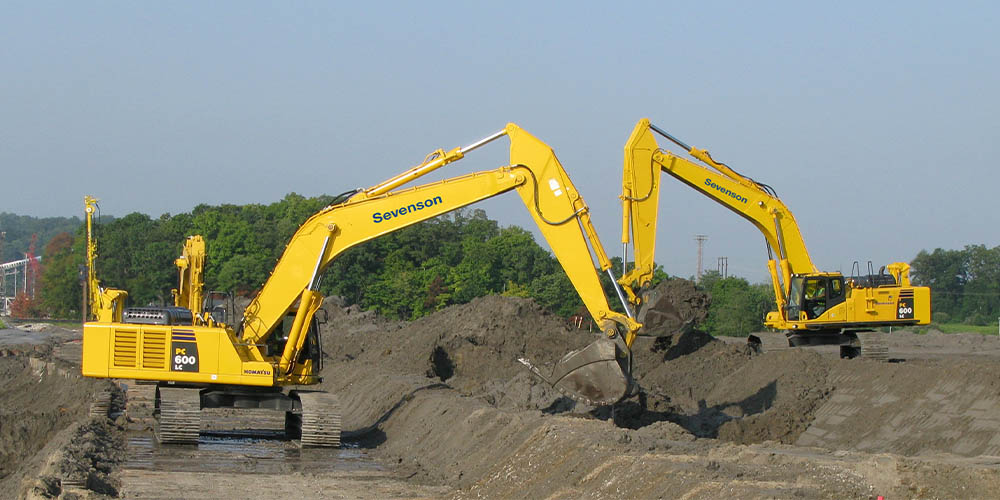
Emory River Dredging and Dewatering
| Location | Kingston, Tennessee |
| Contract Value | $80,000,000 |
| Period of Performance | August 2009 – June 2011 |
| Role | Prime Contractor |
History & Location
The Kingston Fossil Plant (KIF) is located at the confluence of the Emory and Clinch Rivers on Watts Bar Reservoir near Kingston, Tennessee. Kingston is one of TVA’s larger fossil fuel plants. It generates 10 billion kilowatt-hours of electricity a year. Plant construction began in 1951 and was completed in 1955. Kingston has nine coal-fired generating units.
The Emory River borders the KIF ash cells to the east. Fly ash and bottom ash from the plant is hydraulically transported wet at a rate of approximately 2,400 gpm per operating generating unit through an ash sluicing trench, an ash settling pond, and a stilling basin to remove solids prior to discharging the transport water into the intake channel of the power plant. During normal plant operations, the coarser bottom ash is removed from the ash sluicing channel by mechanical excavator and the finer fly ash is removed from the ash settling pond by hydraulic dredge.
On December 22, 2008 the storage cell dike failed and over 5,400,000 CY of fly ash was released into Swan Pond Hollow and from there into the main river channel of the Emory River. Prior to the ash release, the fly ash which accumulated in the settling pond was removed and deposited into a wet storage cell immediately west of the fly ash settling pond using a hydraulic dredge. The storage cell was constructed by raising the embankment of the cell as it filled using the upstream dike construction method, which decreases the size of the storage cell as the cell fills.
The Tennessee Valley Authority (TVA) recovered fly ash released into the Emory River utilizing both hydraulic dredges and mechanical excavators.
Significant Project Features
Phase 1 – Time Critical Removal Action:
- Hydraulic dredging of 1,500,000 CY of fly ash at a production rate of 12,000 CY per day to meet the schedule
- Emergency mobilization of dredge and ash recovery system equipment including 20 inch, 16 inch and 14 inch cutterhead dredges; dredging support equipment (barges, scows, pumps, pipe, process equipment); and conventional earthwork and excavation equipment (backhoes, loaders, off road dump trucks)
- Installation of 1,000 lf by 25 ft deep impermeable turbidity curtain with integral floats
- Installation of 8,000 lf 20 inch HDPE piping and 18,000 lf 16 inch HDPE piping to support the dredging operation
- Installation of 1,800 lf of sheet pile wall for structural support
- Installation of 1,800 lf of matted roadway for excavators and support equipment.
Phase 2 – Additional Work Order:
- Hydraulic dredging of 1,000,000 CY of sediments at a rate of 10,000 CY per day. Four (4) month completion schedule
- Design, installation, operation and maintenance of a bank of 12 filter presses capable of processing more than 4,000 CY/per day insitu
- Design, installation, operation and maintenance of a 1 acre engineered pad and service roads to house the dewatering system in unseasonably cold winter conditions
Project Gallery
Rooted in Remedial Construction
Expanded into Environmental Dredging
Start a conversation about your upcoming project
(716) 284 - 0431
© 2021 Sevenson Environmental Services -
Privacy Policy | Sitemap
2749 Lockport Road | Niagara Falls, NY 14305
P: (716) 284 - 0431 | F: (716) 284 - 7645
